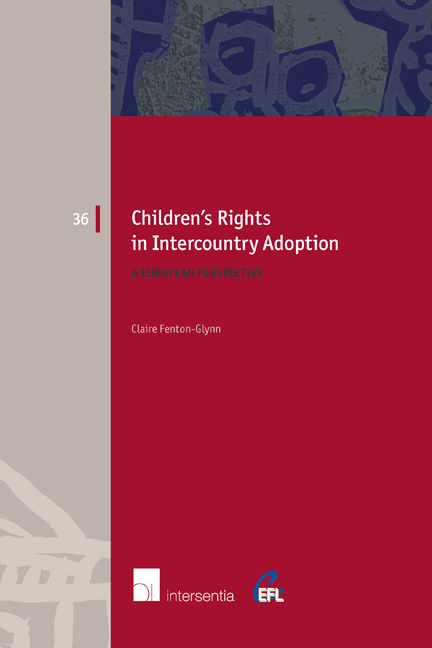Book contents
- Frontmatter
- Dedication
- Acknowledgements
- Contents
- Table of Cases
- Chapter 1 Introduction
- Chapter 2 Combating Abuses: International and Regional Regulation
- Chapter 3 Intercountry Adoption and the Domestic Child Welfare System: The Principle of Subsidiarity
- Chapter 4 Consenting Adults: Giving and Receiving Consent to Adoption
- Chapter 5 Buying Babies: The Inducement of Consent
- Chapter 6 Compulsory Adoption: Adoption Without Consent
- Chapter 7 Child Participation: Autonomy and Protection
- Chapter 8 Adoptive Parents: Eligibility, Preparation, and Support
- Chapter 9 Who Am I? The Child's Right to Identity
- Chapter 10 Conclusion
- List of Legislation
- Literature
- Index
- About the Author
- Miscellaneous Endmatter
Chapter 7 - Child Participation: Autonomy and Protection
Published online by Cambridge University Press: 26 November 2017
- Frontmatter
- Dedication
- Acknowledgements
- Contents
- Table of Cases
- Chapter 1 Introduction
- Chapter 2 Combating Abuses: International and Regional Regulation
- Chapter 3 Intercountry Adoption and the Domestic Child Welfare System: The Principle of Subsidiarity
- Chapter 4 Consenting Adults: Giving and Receiving Consent to Adoption
- Chapter 5 Buying Babies: The Inducement of Consent
- Chapter 6 Compulsory Adoption: Adoption Without Consent
- Chapter 7 Child Participation: Autonomy and Protection
- Chapter 8 Adoptive Parents: Eligibility, Preparation, and Support
- Chapter 9 Who Am I? The Child's Right to Identity
- Chapter 10 Conclusion
- List of Legislation
- Literature
- Index
- About the Author
- Miscellaneous Endmatter
Summary
While the procedure by which parents can give consent, or have their consent dispensed with, is of great importance in protecting the rights of children in intercountry adoption, of equal importance is the right of the child himself or herself to be involved in the decision-making process, and to be adequately represented when doing so.
The participation of the child in the adoption process is important for three key reasons. First, it is of substantive value, as it enables decision-makers to come to better decisions. Without hearing the views of the child where it is possible to do so, and taking them into consideration, it is not possible to determine the content of the child's best interests. As such, there can be no correct application of the welfare principle under article 3 UNCRC if the child's right to participate in the decision-making process is not respected.
Second, hearing the voice of the child has procedural value. As Baroness Hale has emphasised, where the child is heard, he or she “will feel respected, valued and involved”. The child will be more likely to respect a decision where this is the case, which is of particular importance with respect to adoption. The success of an adoption depends heavily on the attitude of the child, and his or her willingness to integrate into a new environment. This is particularly the case in intercountry adoption, where the child will be integrated not only into a new family, but also into a new country, culture and society. Where the child is unhappy with the decision taken, he or she may cause difficulties in the placement, and pose a bar to its success. Even where the decision taken is against the child's wishes, the participation of the child can help him or her understand the process, and why that particular decision has been made.
Third, there is symbolic value attached to the participation of the child. The recognition of the autonomy of children was one of the most important features of the UNCRC, which will be discussed in more detail below.
- Type
- Chapter
- Information
- Children's Rights in Intercountry AdoptionA European Perspective, pp. 117 - 146Publisher: IntersentiaPrint publication year: 2014

